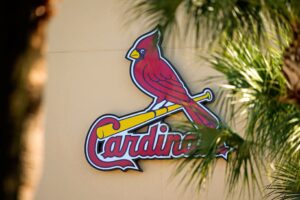What’s next for Minor League Baseball as new MLB proposal aims to reshape landscape?
Professional baseball in the United States looks set for a radical shake-up. This shake-up could threaten the existence of Minor League Baseball (MiLB) in its current form.
The Professional Baseball Agreement between Major League Baseball (MLB) and MiLB will expire at the end of the 2020 season. A new proposal is currently in place. Among other changes, this proposal will sever major-league affiliations for 42 teams from the lower reaches of MiLB.
The current contract between MLB and MiLB sees major league clubs provide the staff and players for the minor league teams and pay their wages. Additionally, the minor league teams cover all the other costs.
MLB say the driving force behind the new proposal is to see improved “working conditions of minor league players.” This would include “upgrading the facilities to Major League standards, increasing player compensation, reducing travel time … for road games, improving transportation and hotel accommodations, increasing the number of off days, and providing better geographical affiliations between the M.L.B. Clubs and affiliates”, the organization said in a statement.
As part of the same proposal, the amateur draft will be reduced from 40 to 20 rounds. It will also be moved from June to August. The contracts for the players from this reduced talent pool will therefore begin the following season, and instead the players will report to MLB complexes to take part in the “Houston Plan” – a series of analytical tests which earned its nickname from Astros GM Jeff Luhnow.
Baseball in popular culture
Elsewhere, each organization could face limits on the number of players they could have in Triple-A, Double-A, High-A, Low-A, and the minor league ‘complex’ team, while MLB said a new “Dream League” would be created to provide undrafted players a platform to play for pro contracts.
Yet, while all of these are certainly admirable aims to increase MiLB standards and conditions, many within baseball believe the proposal to achieve these changes will have an adverse effect on the minor leagues and the local communities they serve.
Baseball, after all, is America’s “favorite pastime.” But this is not because of the bright lights of Major League Baseball. Rather it is due to the grassroots game and ballparks across the United States and the history it entails.
Indeed, North America has successfully exported baseball around the world, transporting the sport’s magic to many regions – from Japan and South Korea to Europe and Australia – making baseball one of the USA’s most popular and successful exports.
However, this proposal can put as many as 1,200 MiLB players will be out of work. As a result, MLB risks damaging what makes baseball such a special part of American culture.
Loss of culture and identity
MiLB provides fans across the country a far more accessible product than MLB. Under its current agreement, followers can also to potentially see the next big stars in action. Some minor league teams can attract crowds in the multi-thousands, thanks in large part to their affiliation with MLB teams.
By severing MLB affiliations with as many as a quarter of all MiLB teams, many cities across America are expected to be hit economically while losing part of their culture. In addition, the overhaul will simply deny fans more opportunities to watch the sport they love.
Considering all the potential damage the new proposal could cause to not only minor league baseball but to American sports culture, some resistance from MLB might be expected. Except all MLB owners voted 30-0 in favor of the new proposal.
But why? It essentially boils down to what, financially, is best for the teams and owners in the big leagues. While many MLB owners have expressed concerns about the playing facilities in the minor leagues and have for some time sought change, the biggest reason for this radical overhaul is based on player development.
Streamline talent-spotting
The current model of using MiLB as a breeding ground for MLB players appears to have run its course. It has been deemed outdated and too expensive from the perspective of MLB owners. The emergence of data tracking, analytics and various other technological advances, calls for less time needed for prospect evaluation.
Additionally, more advanced training methods, including video analysis, means players can now make improvements just as effectively in training as they might have previously done in a regulation MiLB game. As players lean more towards these methods, there is less of a demand from within an MLB organization to drop down into the minors.
Talent identification is just one of many areas where MLB is embracing new technologies to enhance their product. Performance trackers like K-Vests and Swingtracker are already in common use by many teams. Meanwhile the organization has made steps into the crypto currency space, with MLB Crypto Baseball. This follows the lead of many retailers and other types of businesses such as online casinos or travel companies.
MLB is right to look to the future and find ways to evolve the top tier of professional baseball. This is true for both the sport and the consumer product. But when those same ambitions infringe on the survival of Minor League Baseball in its current form, is there perhaps room for compromise? Does anyone really want to see such an intrinsic part of American sports culture and history irrevocably damaged?
“My job is to save baseball in all 42 of those communities. If that’s possible,” Pat O’Conner, the president and chief executive of Minor League Baseball, said.
With just one year until the new proposal could come into play, O’Conner has plenty of work to do.
Main Photo: Embed from Getty Images






